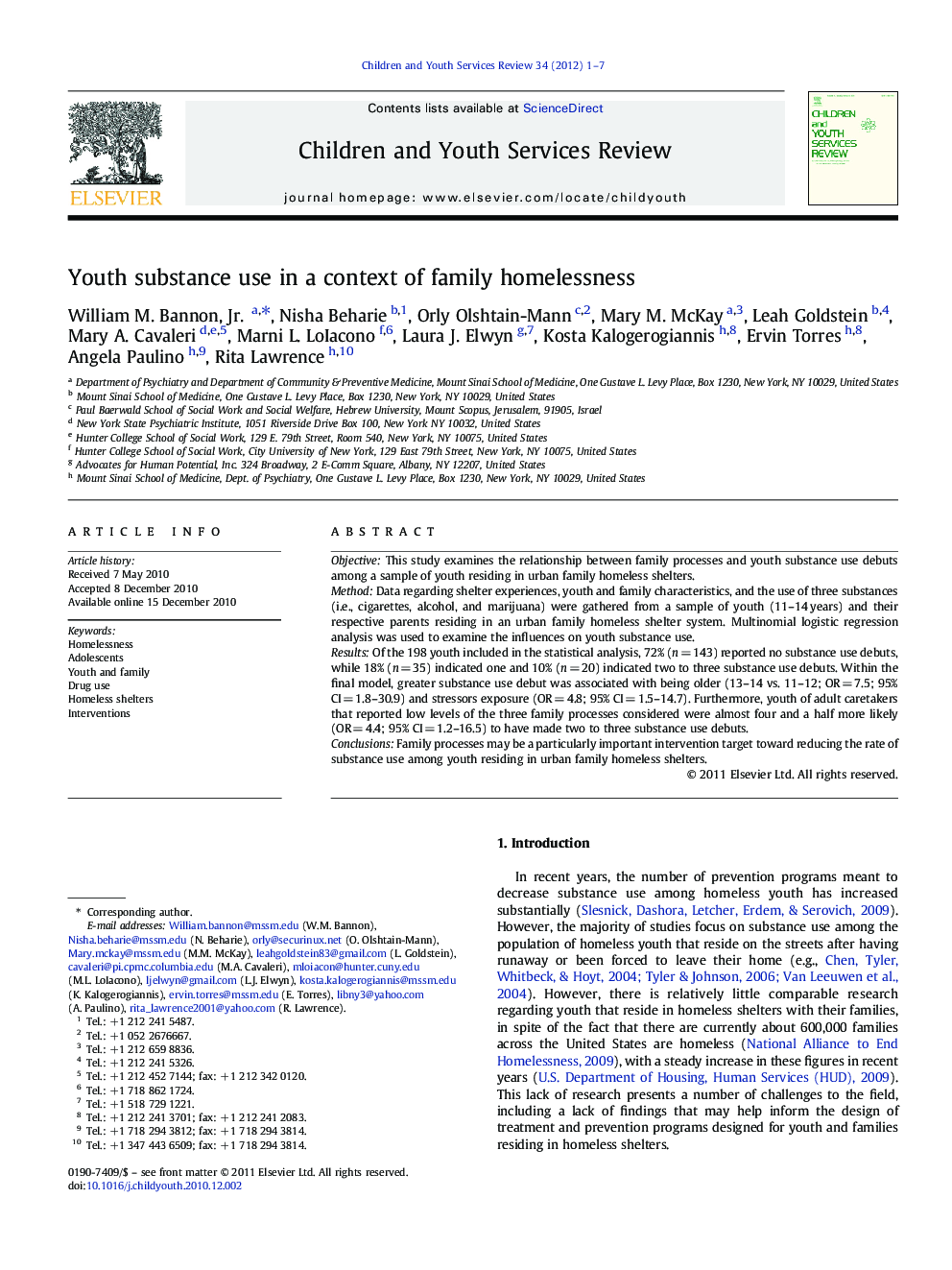| Article ID | Journal | Published Year | Pages | File Type |
|---|---|---|---|---|
| 346704 | Children and Youth Services Review | 2012 | 7 Pages |
ObjectiveThis study examines the relationship between family processes and youth substance use debuts among a sample of youth residing in urban family homeless shelters.MethodData regarding shelter experiences, youth and family characteristics, and the use of three substances (i.e., cigarettes, alcohol, and marijuana) were gathered from a sample of youth (11–14 years) and their respective parents residing in an urban family homeless shelter system. Multinomial logistic regression analysis was used to examine the influences on youth substance use.ResultsOf the 198 youth included in the statistical analysis, 72% (n = 143) reported no substance use debuts, while 18% (n = 35) indicated one and 10% (n = 20) indicated two to three substance use debuts. Within the final model, greater substance use debut was associated with being older (13–14 vs. 11–12; OR = 7.5; 95% CI = 1.8–30.9) and stressors exposure (OR = 4.8; 95% CI = 1.5–14.7). Furthermore, youth of adult caretakers that reported low levels of the three family processes considered were almost four and a half more likely (OR = 4.4; 95% CI = 1.2–16.5) to have made two to three substance use debuts.ConclusionsFamily processes may be a particularly important intervention target toward reducing the rate of substance use among youth residing in urban family homeless shelters.
► We examined how family factors impact substance use among youth in homeless shelters. ► Analysis indicated that stronger family factors were protective of substance use. ► Family factors may be key drug intervention targets among youth in homeless shelters.
